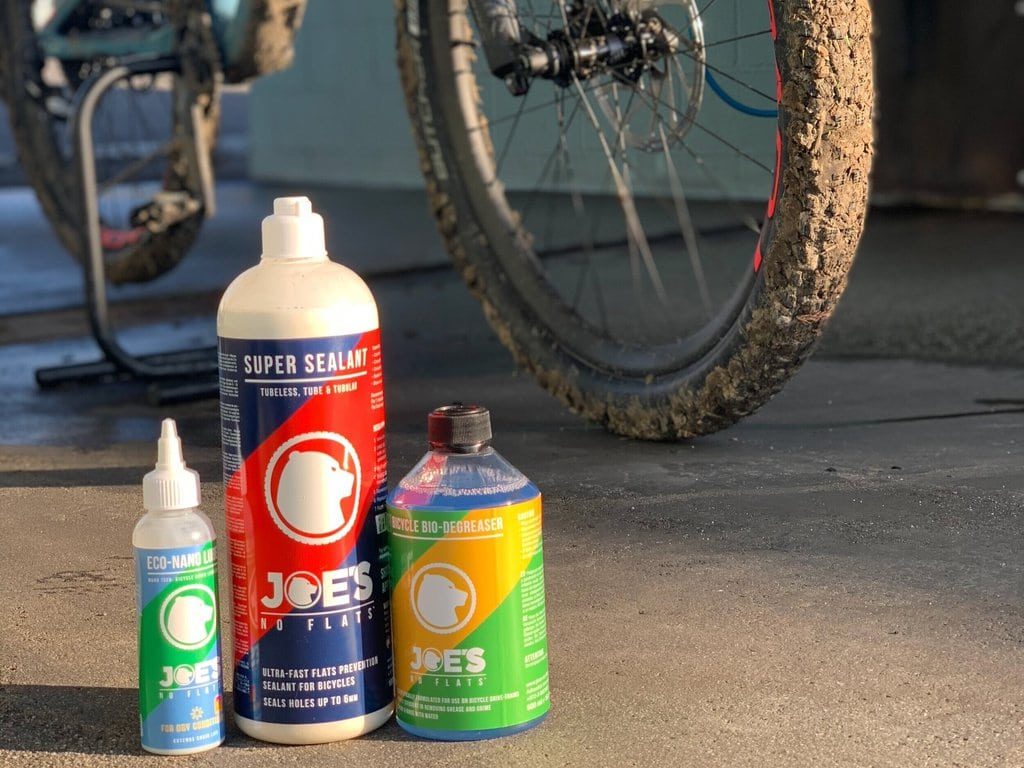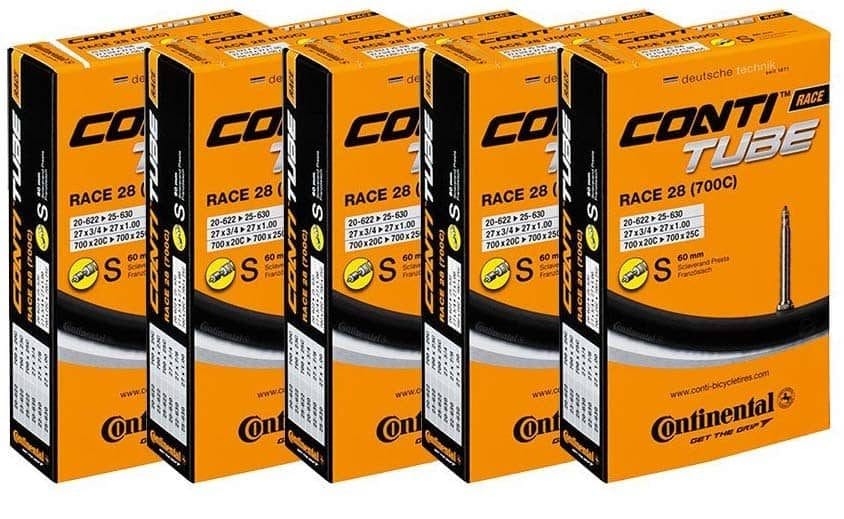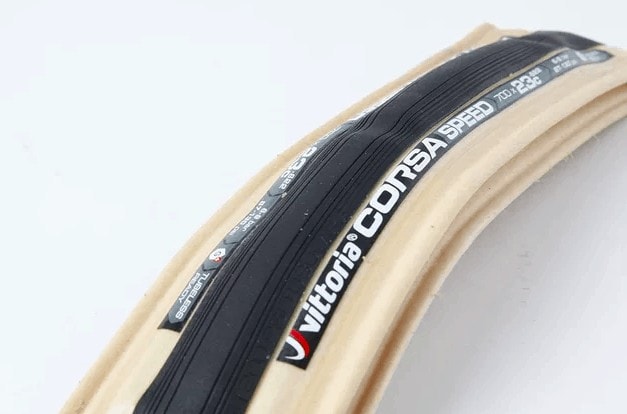11 Easy Ways to Minimize Punctures
Getting a flat, or multiple ones, it isn’t the highlight of any cyclist’s riding experience. It can ruin your day, especially if you aren’t properly equipped to handle it.
- Why is it you have no flats at all, and then one day you get one or more in a row?
- What’s up with that?
- Is it just the law of averages?
- Or bad luck?
I don’t think so.
There are many things a cyclist can do before and during a ride to prevent flats, let’s look at 11 simple things you can do to minimize punctures.
On This Page
Look Where You're Going
It may sound obvious, look where you’re going, but it’s easy to get distracted when riding your bike. Maybe you’re having an interesting conversation with the person next to you, or your eyes get fixed on the beautiful scenery around you, and rightly so.
Large pot holes, broken glass, nails, thorns, or accidentally hitting large pieces of metal and debris on the side of the road can cause you to flat, potentially ruining expensive tires, or worse, leading to a crash.
Keep your own eye on the road and be sure to point out anything you wouldn’t want to ride over to those behind you; its proper cycling manners.
Check Your Tires Regularly
It’s happened to all of us.
Despite our efforts to watch where we’re going, we ride over something sharp in the road. Or maybe the person in front of you swerved out of the way of some debris or glass, but failed to point it out to you. You may not have flatted then and there, but time will tell.
Your tire may have picked up something minuscule that you didn’t see or feel, so take a few moments now and then to inspect your tires. Little slivers of glass and small sharp stones are the usual culprits, but if you catch them in time, they are easily removed before they work their way through the tire and cause a flat or an annoying slow leak.
Replace Worn-Out Tires
Prices on road and mountain bike tires are climbing as more technology goes into their development. They can be more expensive than tires for cars! Like most people, you want to get as much use out of them as possible. But when you get a flat, it’s a sign that it may be time for new tires.
Tires wear on the centerline, eating away the rubber compound. At a certain point, they start to square off at the top or lose their tread. This isn’t necessarily something that catches your eye, but if you stoop down and inspect them at eye level, you’ll see for yourself.
It’s smart to check your tire sidewalls too. Look for minor cuts that work their way open over time because of internal tire pressure, dried-out patches, or weakened tire beads that can cause a nasty blowout. All of these examples are reason enough to get your bike some new sneakers.
Check Your Tire Pressure
Spoiler alert, your tires, and tubes are porous and won’t hold air forever. You filled up a few days ago but noticed your tires running low on today’s ride. Tire pressure changes with the weather (atmospheric pressure) and temperature, gradually losing pressure. Latex tubes are especially susceptible to these factors.
Topping up your tires before you head out, or at least checking their pressure, should become a reflex before you ride. If your tires are filled to the proper amount, they’ll more than likely roll over a shard of glass or a nail and not pick it up.
Optimal tire pressures are printed on your tire sidewall, or check your ideal pressure here.
Inspect Your Rim Tape
You don’t understand. You’ve gotten a few flats in a row, checked the tire, and it seems fine. What’s going on?
If this is happening to you, and you run tubes, remove and over inflate the tube the next time you flat. Where’s the damage causing the air to escape?
Compare it to where the valve stem goes into your rim. Is it on the rim side or tire side?
If it’s rim side, you’ve found the offender. Check your rim.
Is there a little hole where the spoke head pokes through? Or has the strip moved, exposing the spoke hole?
Rim strips that come on most bikes aren’t the best quality. Replace them with a quality self-adhesive cloth tape from Velox or Zefal and ride worry-free.
Avoid Using Patched Tubes in the Long Term
Patches are a wonderful thing, especially since glueless ones came to market. They have saved me several times, getting myself or a riding buddy home with no incidents. Tubes aren’t cheap, so patching what you’ve got is better for your budget and the planet, but patched tubes only last so long.
If your leak is coming from a seam on your tube, forget the patch, they never hold and air seeps out from underneath on the seam. Save yourself some time and effort and use in a new tube.
Ride patched tubes at your own discretion, knowing that they eventually fail. Instead of throwing out old tubes, use them in clever ways on your bike, as useful elastic bands, and for projects around the house.
Minimize Riding in Wet Weather
You don’t need to convince me not to ride in wet weather. When it rains, crud from the road ends up on your tires (and you).
Technology rescued cyclists everywhere with the onset of smart home trainers. If you have one, they’re the perfect excuse not to ride in the rain.
Rain or shine, if you roll over flat-causing material or see a buildup on your tires, find a patch of grass and give your wheels a spin. It does a good job of removing superficial debris which may prevent a flat.
Choose Your Tires Carefully
Lightweight tires used for competition may be your favorites, but their fast rolling rubber compound wears down more rapidly and provides the least amount of protection against flats. They’re made for speed and aren’t an intelligent choice for training for these very reasons. The more you ride any tire, the faster they wear.
Cyclists can purchase tires with a layer of flat protection sandwiched into its compound. If in doubt, check the tire packaging. Nothing is foolproof. This armor only goes so far and may solely cover the main rolling surface and not the sidewalls. It makes tires weigh a bit more, but they are worthy grams in my opinion.
The choice is yours.
Consider Going Tubeless
Even if you aren’t running tubeless already, you’ve probably heard of them. They’re special tires and wheelsets that hold pressure via an airtight seal around the rim and tire bead, eliminating the need for a tube. If you are interested in this technology, look for tubeless or tubeless-ready on the label.
They’ve become a hot topic thanks to the added comfort and increased speed and performance they provide for the rider.
Yet another benefit of going tubeless is their added protection against flats. The sealant used in the tubeless installation process repairs most minor damage automatically, bye-bye punctures.
Read More : Tubeless vs Clincher vs Tubular – Everything You Need to Know
Powder Your Tubes and Tires
This is an old-school technique that works wonders. In fact, inner tubes used to come with a light layer of powder or a similar substance already on it visible in the box, but lower quality production and the battle of cost gains or making more money saw it disappear. You, however, can revive this old practice at home.
Before installing your tube, inflate it and sprinkle talcum powder on it here and there. Use your hand to spread it around the entire circumference. You’ll feel and see where you may have missed. Now put a small pile inside the tire and turn it 360º to coat the inside. Powdered surfaces glide against each other, helping to prevent punctures, and particularly pinch flats.
Don't Talk About It!
A debatable theory for some, but in my experience, it’s true. Call it superstition, but if you start talking about how long it’s been since you’ve had a flat around experienced roadies, they’ll stop you mid-sentence. It just isn’t something you talk about. Bad juju.
If it’s been a while since you flatted, fantastic, but in all likelihood, it just may be time to inspect your tires for wear instead of betting on your continued good luck. An ounce of prevention is worth a pound of cure and talking about it will get you nowhere.
Author Recommended Reads



